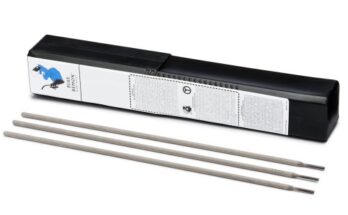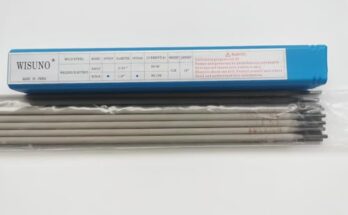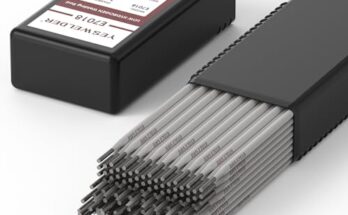Need a reliable welding rod for your next project? Let’s dive into the world of certanium welding rods, exploring their features, applications, and everything you need to know to make an informed choice. We’ll cover everything from the basics to advanced techniques.
Certanium welding rods are a type of electrode
used in arc welding processes. They are known for their exceptional performance characteristics, often outperforming standard welding rods in terms of strength, weldability, and overall quality. Unlike traditional rods which might consist primarily of a single metal type, certanium rods frequently contain a blend of metals and alloys, finely tuned to achieve desired results in specific applications. The exact composition varies depending on the intended use, but they are often formulated to produce strong, ductile welds with minimal spatter and a clean, smooth finish. This precise blend of materials gives the Certanium rods their unique properties. For example, a rod designed for stainless steel welding might incorporate nickel, chromium, and molybdenum for superior corrosion resistance in the final weld. Similarly, rods designed for high-strength applications might include elements like vanadium or titanium to improve tensile strength. The intricate balance of these elements is what differentiates Certanium rods and makes them a premium choice for many professional welders.
Key Features and Benefits of Certanium Welding Rods
Certanium welding rods stand out due to several key features that improve weld quality and efficiency. These include superior arc stability, resulting in a smoother, more consistent weld. This reduces the likelihood of defects and ensures a stronger, more reliable bond. The reduced spatter characteristic is another significant advantage, minimizing cleanup time and material waste. This also means a cleaner, more aesthetically pleasing weld. Furthermore, many Certanium rods offer excellent penetration, enabling welders to create deep, robust welds that can withstand significant stress and strain. The ease of use is also worth mentioning. Certanium rods are designed for a smooth welding experience, reducing the effort required and improving the overall efficiency of the welding process. This results in faster job completion and reduced fatigue for the welder. This combination of characteristics makes them well-suited for a wide range of applications, from automotive repair to industrial fabrication.
Comparing Certanium Welding Rods to Other Types
When comparing Certanium welding rods to other types, it’s essential to consider specific application requirements. While standard welding rods might suffice for simpler projects, Certanium rods often provide superior results in demanding situations. For example, consider a project involving the repair of a high-pressure vessel. Using a standard rod might not provide the necessary strength and corrosion resistance, whereas a Certanium rod formulated for high-strength applications could ensure the vessel’s longevity and safety. Similarly, in applications where aesthetic appeal is crucial, the lower spatter and smoother finish of Certanium rods would be a clear advantage. While Certanium rods might come at a slightly higher cost, this is often justified by the improved quality, durability, and efficiency they provide. The enhanced performance can translate to lower overall project costs in the long run due to reduced rework and material waste. Choosing the right rod depends heavily on the project’s specific needs and constraints.
Applications of Certanium Welding Rods
Welding Different Metals and Alloys
Certanium welding rods are versatile and can be used with a variety of metals and alloys. This versatility stems from the wide range of formulations available, each designed to match the characteristics of the base metal. For example, specific Certanium rods are engineered for stainless steel, offering excellent corrosion resistance and high strength welds. Other formulations are optimized for mild steel, providing strong, reliable bonds with minimal distortion. Even specialized alloys such as aluminum or titanium can be welded using appropriately selected Certanium rods. The key is to always choose the correct rod type for the base metal to ensure optimal weld quality and avoid complications. Selecting the wrong rod could result in weak welds, porosity, cracking, or other issues. This highlights the importance of careful rod selection based on the material being welded.
Industrial Applications of Certanium Welding Rods
The exceptional performance of Certanium welding rods makes them particularly well-suited for demanding industrial applications. Their strength and durability are essential in heavy-duty equipment repair and fabrication. Applications in pipelines, pressure vessels, and structural steel fabrication all benefit from the superior properties of Certanium rods. In industries like shipbuilding or construction, where safety is paramount, the reliability of a Certanium weld is a critical factor. The reduced spatter and consistent weld bead also contribute to increased efficiency in high-volume industrial settings, ultimately reducing production time and costs. Furthermore, the consistent quality of Certanium rods leads to fewer rejects and reduced waste, saving time and resources in large-scale projects. The high-performance properties consistently deliver results in these high-stakes environments.
Automotive and Repair Applications
Within the automotive sector, Certanium welding rods find extensive use in both manufacturing and repair applications. Their strength and corrosion resistance are crucial for creating durable welds in vehicle frames and body panels. In repair shops, Certanium rods provide the precision and quality needed for restoring damaged components. The reduced spatter minimizes cleanup, which is especially important in automotive repair where time is often a critical factor. The ability to achieve a strong, reliable weld quickly and efficiently makes Certanium rods a valuable tool in busy repair environments. The high-quality weld ensures the structural integrity of the repair, maintaining the vehicle’s safety and performance. Their ease of use simplifies the repair process, improving productivity for mechanics.
Choosing the Right Certanium Welding Rod
Understanding Rod Specifications
Understanding the specifications on a Certanium welding rod is crucial for selecting the correct one for your project. These specifications typically include the rod’s diameter, length, and most importantly, the filler metal composition. The diameter influences the weld bead size and penetration, while the length determines how much welding can be done without changing rods. The filler metal composition is critical, determining the weld’s mechanical properties, such as strength and corrosion resistance. This information is usually marked directly on the rod packaging and should be carefully reviewed before beginning any welding work. Failure to use the correct rod can lead to undesirable outcomes such as brittle welds, reduced strength, and even complete weld failure. Proper attention to detail here is crucial for a successful project.
Factors to Consider When Selecting a Rod
Several factors influence the choice of Certanium welding rod for a specific application. These include the base metal’s composition (steel, stainless steel, aluminum, etc.), the desired weld strength, and the required corrosion resistance. The welding process itself (MIG, TIG, stick welding) also plays a role, as different rods are designed for optimal performance with specific processes. The thickness of the base material affects the required rod diameter and penetration capabilities. Environmental factors can also be considered, especially for outdoor applications where corrosion resistance is paramount. Finally, cost should be factored in, balancing the rod’s price with its overall performance and the potential cost of rework or failure. A careful assessment of these factors ensures the best possible results.
Where to Purchase Certanium Welding Rods
Certanium welding rods can be sourced from various suppliers, both online and offline. Many welding supply stores carry a range of Certanium products, offering expert advice to guide your selection. Online retailers also provide access to a wide selection, often with detailed product descriptions and specifications. It is important to purchase from reputable sources to ensure the authenticity and quality of the rods. Before buying, compare prices and product specifications from several suppliers to find the best deal. Reading customer reviews can also provide valuable insight into the quality and performance of the rods from a particular source. Choosing a reliable supplier can save you money and effort in the long run.
Safety Precautions When Using Certanium Welding Rods
Essential Safety Equipment and Practices
Welding with Certanium rods, or any welding process, requires strict adherence to safety protocols. Essential safety equipment includes a welding helmet with appropriate shade, welding gloves, protective clothing (long sleeves, long pants, closed-toe shoes), and eye protection. Proper ventilation is crucial to avoid inhaling welding fumes, which can be hazardous to health. The work area should be clean and well-lit, with fire-resistant materials readily available. It is also important to be aware of the potential hazards associated with electric shock and ultraviolet radiation. Understanding and implementing these safety measures is essential for preventing accidents and protecting your health.
Handling and Storage of Welding Rods
Proper handling and storage of Certanium welding rods are also critical for maintaining their quality and ensuring safe usage. Rods should be stored in a dry place to prevent corrosion. Keep them away from moisture, extreme temperatures, and sources of contamination. Always inspect rods for damage before use; damaged or compromised rods should be discarded. Handle the rods carefully to avoid bending or breaking them. The proper storage and handling of Certanium rods not only extend their lifespan but also enhance safety during operation. Neglecting these practices could lead to defective welds, reduced efficiency and even increase the risk of accidents.
Emergency Procedures
In the event of an accident involving Certanium welding rods, it is important to know the appropriate emergency procedures. This may include the need to contact emergency services, implement fire safety measures, and provide first aid. Being aware of the potential hazards associated with welding and having a plan in place for handling emergencies is crucial for maintaining safety. This preparedness includes knowing the location of fire extinguishers, first aid kits, and emergency contacts. Regularly reviewing and practicing safety procedures ensures everyone’s well-being and reduces the likelihood of serious consequences. A proactive approach to safety is vital in any welding environment.
Advanced Techniques and Applications
Specialized Welding Processes
Certanium welding rods can be utilized in various specialized welding processes, broadening their applications beyond basic techniques. For instance, pulse welding, a controlled arc welding method, allows for precise deposition and control over the weld bead’s profile. This is especially useful for applications requiring intricate welds or precise control over penetration. Other specialized techniques like submerged arc welding (SAW) can also employ Certanium rods for increased productivity and improved weld quality. Such advanced techniques necessitate expertise and experience but significantly improve performance in demanding applications.
Improving Weld Quality and Efficiency
Several techniques can further improve the quality and efficiency of welds using Certanium rods. Proper joint preparation is key, ensuring clean and properly fitted joints before welding. Maintaining consistent arc length and travel speed also plays a crucial role. By employing appropriate preheating and post-weld heat treatment, the user can minimize residual stresses and improve the final weld’s mechanical properties. These are some of the crucial considerations involved in achieving optimal results using Certanium welding rods in a professional setting. Mastering these techniques results in high-quality, reliable welds.
Troubleshooting Common Welding Problems
Troubleshooting problems when welding with Certanium rods often involves identifying the root cause of the issue. Problems like porosity, cracking, or poor penetration can often stem from factors like improper rod selection, incorrect welding parameters, or poor joint preparation. By systematically checking these aspects, the root cause can be identified and addressed. Consulting welding manuals and seeking advice from experienced welders can also be beneficial in resolving complex issues. Proactive problem-solving minimizes costly rework and ensures consistently high-quality welds. Understanding potential issues increases the chance of avoiding them during the welding process.
Certanium Welding Rod Composition and Metallurgy
Understanding the Alloying Elements
The specific composition of Certanium welding rods varies significantly depending on the intended application. However, the common alloying elements frequently include elements such as manganese, silicon, chromium, molybdenum, nickel, and vanadium. Each element contributes specific properties to the weld, impacting factors like strength, ductility, corrosion resistance, and weldability. A deep understanding of these elements and their influence on the weld’s metallurgical structure is essential for selecting the optimal rod for the specific task. The precise balance of these elements is what sets Certanium rods apart from standard welding rods.
The Metallurgy of Certanium Welds
The metallurgical structure of a weld created using Certanium rods is critical to its overall performance. Factors such as grain size, the presence of intermetallic compounds, and the distribution of alloying elements all influence the weld’s mechanical properties. Understanding the metallurgical changes that occur during welding and how they affect the final weld structure is essential for optimizing the welding process and ensuring the desired weld quality. This understanding allows welders to predict and control the characteristics of the finished product. It is a complex but crucial aspect of advanced welding techniques.
Microstructural Analysis of Certanium Welds
Microstructural analysis, a technique used to examine the weld’s internal structure at a microscopic level, provides valuable insight into the weld’s quality and potential failure mechanisms. Techniques like optical microscopy and scanning electron microscopy are used to reveal details about the grain structure, the distribution of alloying elements, and the presence of any defects. This detailed analysis provides crucial information that helps improve the welding process and create even stronger, more reliable welds. Analyzing this level of detail enhances both the quality and reliability of the welding process.
Environmental Impact and Sustainability
Recycling and Disposal of Welding Rods
The proper recycling and disposal of Certanium welding rods are crucial for environmental protection. Many welding rod suppliers offer recycling programs, ensuring proper management of these materials. Following recommended disposal guidelines helps reduce the environmental impact of welding operations. These procedures aim to reduce waste and prevent the release of hazardous substances into the environment. By participating in such programs, welders contribute to a more sustainable welding practice.
Reducing Waste and Improving Efficiency
Minimizing waste during welding operations is critical for improving efficiency and reducing the overall environmental impact. Careful planning, precise welding techniques, and the use of appropriately sized rods all contribute to reducing waste. Techniques like using shielding gas appropriately, minimizing spatter, and optimizing welding parameters improve efficiency, decrease the need for rework, and reduce material consumption. This environmentally conscientious approach reduces both environmental impact and the economic costs associated with waste.
Sustainable Practices in Welding
Sustainable practices in welding go beyond proper waste disposal. They encompass the entire process, from rod selection to the final weld. Choosing energy-efficient welding equipment, employing renewable energy sources, and selecting environmentally friendly filler materials are all important aspects of sustainable welding. By adopting these practices, welders can reduce their carbon footprint and contribute to a more environmentally responsible industry. This proactive approach ensures the long-term sustainability of the welding profession.
Frequently Asked Questions
What are Certanium welding rods best for?
Certanium welding rods excel in applications demanding high strength, excellent corrosion resistance, and a smooth, clean weld. They are ideal for high-pressure vessels, pipelines, structural steel, automotive repair, and other industries where weld quality and reliability are paramount. Learn more about specific Certanium rod formulations to find the perfect match for your project needs.
What is the difference between Certanium rods and standard welding rods?
While standard rods offer adequate performance in basic applications, Certanium rods consistently outperform them in demanding situations. Certanium rods often feature superior arc stability, reduced spatter, enhanced penetration, and improved weldability, leading to stronger, more durable, and visually appealing welds. However, the superior performance usually comes at a higher cost.
How do I choose the right Certanium welding rod for my project?
Choosing the right rod involves carefully considering the base metal’s type, desired weld strength, required corrosion resistance, and welding process. Consult the manufacturer’s specifications and choose a rod with the correct filler metal composition for the application. Always ensure that your selection aligns with the base material and welding technique to ensure the best outcome.
Are Certanium welding rods difficult to use?
Not necessarily. While experience and proper training are essential for any welding task, Certanium rods are designed to provide good arc stability and smooth welding characteristics, making them relatively user-friendly. The reduced spatter also simplifies the post-weld cleanup process.
Where can I buy Certanium welding rods?
Certanium welding rods are typically available from welding supply stores, both online and brick-and-mortar, as well as authorized distributors. It is important to choose a reputable source to guarantee product authenticity and quality. Checking for customer reviews before purchasing will also help ensure you make the right choice.
What safety precautions should I take when using Certanium welding rods?
Always wear appropriate personal protective equipment (PPE), including a welding helmet, gloves, protective clothing, and eye protection. Ensure adequate ventilation to minimize exposure to welding fumes. Follow all safety guidelines provided by the manufacturer and maintain a clean, organized work area. Always be mindful of the risks associated with electric shock and ultraviolet radiation.
How should I store Certanium welding rods?
Certanium rods must be stored in a cool, dry place away from moisture, extreme temperatures, and sources of contamination. Proper storage protects the rods from corrosion and ensures optimal performance when used. Always inspect the rods for damage before use and discard any damaged or compromised rods.
Final Thoughts
Certanium welding rods offer a superior solution for many welding applications, providing exceptional strength, corrosion resistance, and weld quality. While they might represent a higher initial investment compared to standard rods, the superior performance and reduced rework often lead to cost savings in the long run. By understanding the characteristics of Certanium rods, selecting the appropriate rod for your project, and adhering to safety guidelines, you can achieve superior welding results. Mastering the art of welding with Certanium rods not only improves your skill but also strengthens your confidence. So, take the plunge, expand your skillset, and embrace the excellence that Certanium welding rods offer. Start your next project with confidence and precision – build it better with Certanium.


